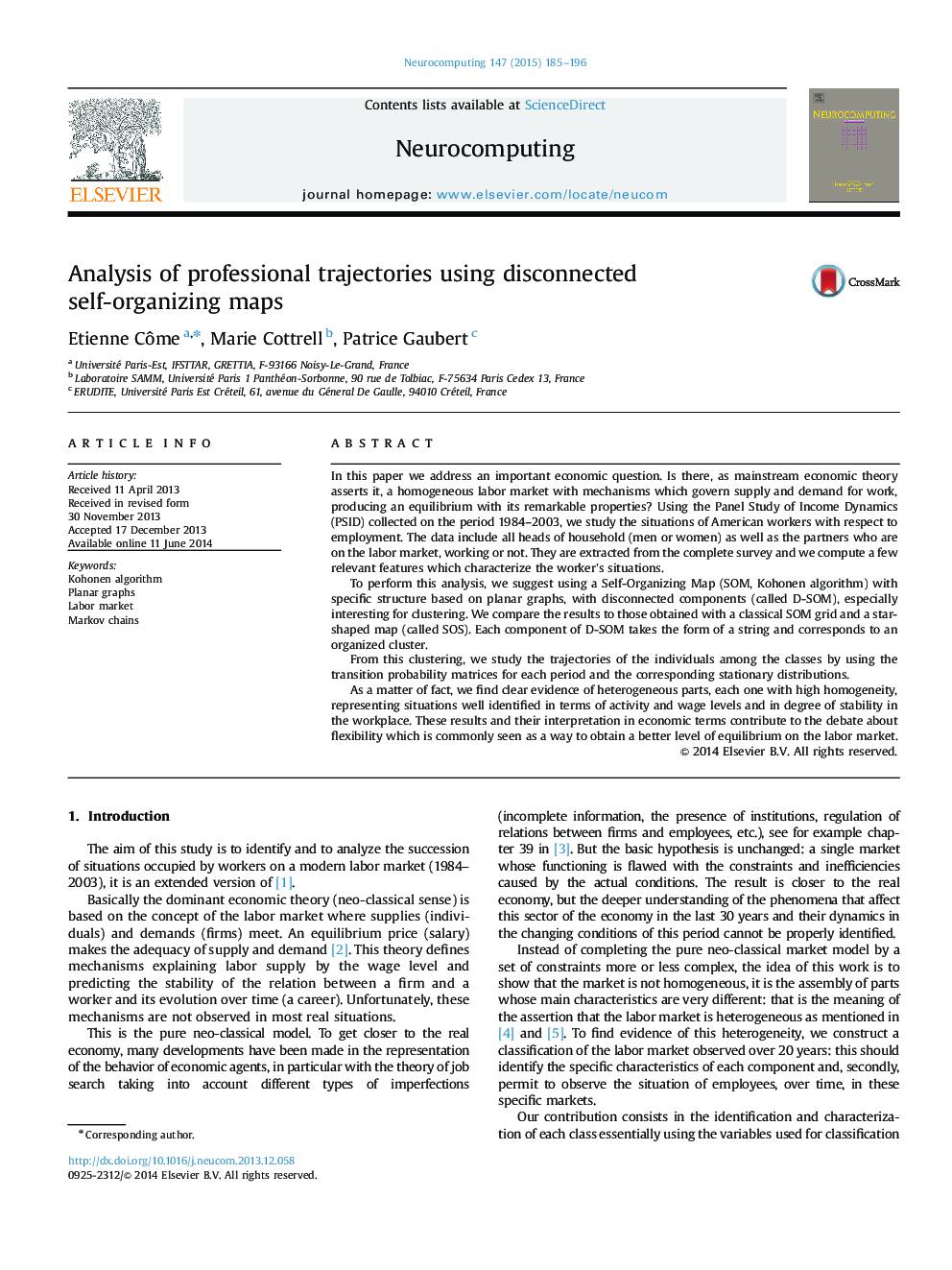| Article ID | Journal | Published Year | Pages | File Type |
|---|---|---|---|---|
| 409864 | Neurocomputing | 2015 | 12 Pages |
In this paper we address an important economic question. Is there, as mainstream economic theory asserts it, a homogeneous labor market with mechanisms which govern supply and demand for work, producing an equilibrium with its remarkable properties? Using the Panel Study of Income Dynamics (PSID) collected on the period 1984–2003, we study the situations of American workers with respect to employment. The data include all heads of household (men or women) as well as the partners who are on the labor market, working or not. They are extracted from the complete survey and we compute a few relevant features which characterize the worker׳s situations.To perform this analysis, we suggest using a Self-Organizing Map (SOM, Kohonen algorithm) with specific structure based on planar graphs, with disconnected components (called D-SOM), especially interesting for clustering. We compare the results to those obtained with a classical SOM grid and a star-shaped map (called SOS). Each component of D-SOM takes the form of a string and corresponds to an organized cluster.From this clustering, we study the trajectories of the individuals among the classes by using the transition probability matrices for each period and the corresponding stationary distributions.As a matter of fact, we find clear evidence of heterogeneous parts, each one with high homogeneity, representing situations well identified in terms of activity and wage levels and in degree of stability in the workplace. These results and their interpretation in economic terms contribute to the debate about flexibility which is commonly seen as a way to obtain a better level of equilibrium on the labor market.
